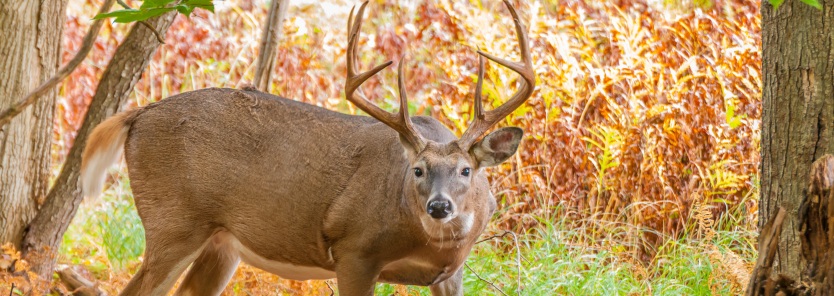If you listen to the chat in the local archery shop about a supposed “lull” that happens during the hunting season you might think it’s useless to venture forth in pursuit of whitetails during this time. It even has a name, in the northern half of the country it’s called the “October lull,” but southern hunters from Georgia to Texas also believe this mysterious phase happens, just later into the season. No doubt, a lot is changing in the whitetails’ world during this time and many hunters will have their beliefs as to why this “calm before the storm” happens. These hunters may just be looking in the wrong spots.
- Prepare for the changes – if you plan on these changes rather than using them as excuses, October can be a very productive time. However, if you are still looking for whitetails to be in the same places you’ve been watching them during August and September, it probably does seem like there’s a lull. Food sources, bedding areas and travel routes will all change during this time. Rather than being surprised when the leaves fall off of the trees, bet on it! It’s happened every year for thousands of years. Instead of cursing the acorns, use them to your advantage.
- Minimize pressure. A huge factor will be the influx of predators at this time…mainly humans. All summer we’ve been waiting indoors because of warm temperatures and insects, then, all of a sudden cooler temperatures arrive, the bugs die off and the “weekend warriors” head afield. Let alone other hunters; now hikers, horseback riders, berry pickers – heck, everybody thinks it’s more pleasant to be outside. This can be a big reason for the drastic decrease in deer sightings. Give your herd sanctuaries, or at the very least, minimize the pressure you put on them.
- That dreaded chlorophyll. October (or later in the south) is undoubtedly the most beautiful period to be afield, stunning fall colors produce breathtaking landscapes. However, the same chlorophyll dropping out of the plants changing the leaves to those brilliant shades is also changing the food sources and the forest cover dramatically. Bedding areas, food sources and travel routes will also change. Serious, persistent scouting and having a several year track record in the same area will help you to keep on top of the changes. Anticipate the changes and beat them to their next haunt.
- Sometimes you feel like a nut. Almost everybody questioned about this topic agreed that there was a lull and most mentioned that at least one of the culprits was one of the whitetails’ favorite foods, acorns. Oak trees during a good year can produce up to 3,000 pounds of acorns per acre of canopy. The protein content is only around 7 percent, but they have huge fat content and are very high in carbohydrates. To us it would almost be like eating butter. For deer, acorns are a tremendous energy source. Studies show that during a good acorn year, deer will grow very fat and more twin fawns will be born the next spring. If they’re readily available, given a choice, it’s said that acorns can make up 80 to 90 percent of their diet. Stay on top of this food source and use it to your advantage. Why do you suppose that Mossy Oak’s Nativ Nurseries is growing so fast? People are starting to figure this out and plant their property with some thought to different acorn species and drop times. You could argue that in many areas acorns drop during “August” so why does this lead to an “October lull?” It’s most likely their need for different nutrients – in September their need for protein is more important, so a plot of Clover Plus or Perfect Plot would be the spot to be. But with colder temperatures their need for carbohydrates and fat becomes vital and their diet will switch over to acorns if available. Use this food source to your advantage – fertilize your oak trees and scout them in August so you know which ones will be dropping best. Again, anticipate this happening so you can be waiting for them in the oak lot.
The key to overcoming the “October lull” is to be versatile and able to change tactics, or spots on a dime. When things change in the whitetails’ world you need to be able to change with them.







